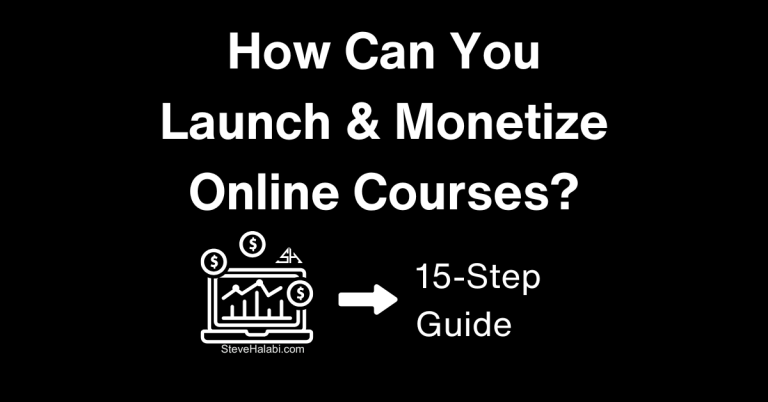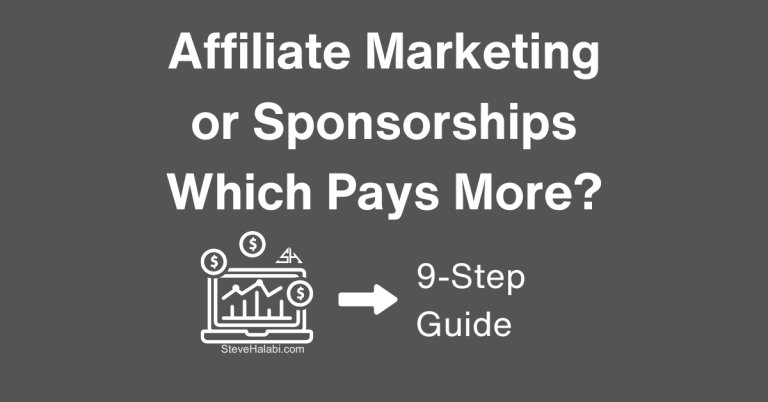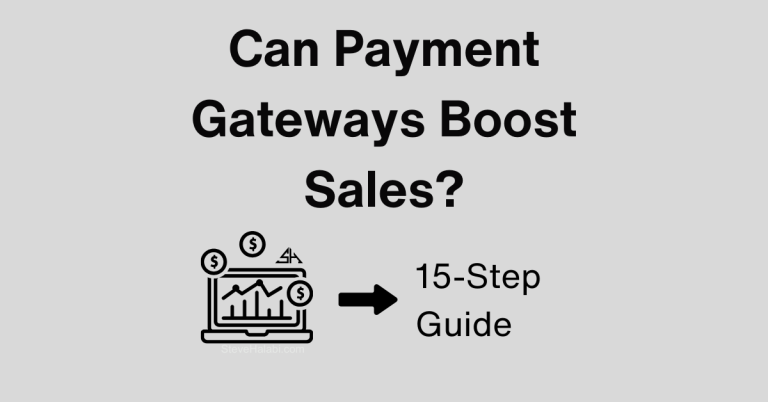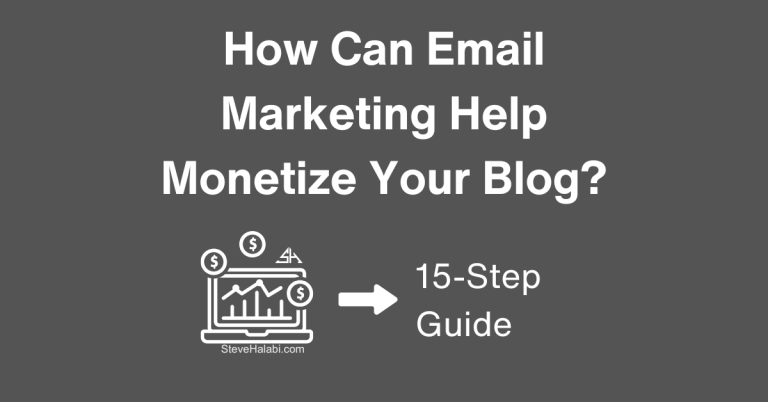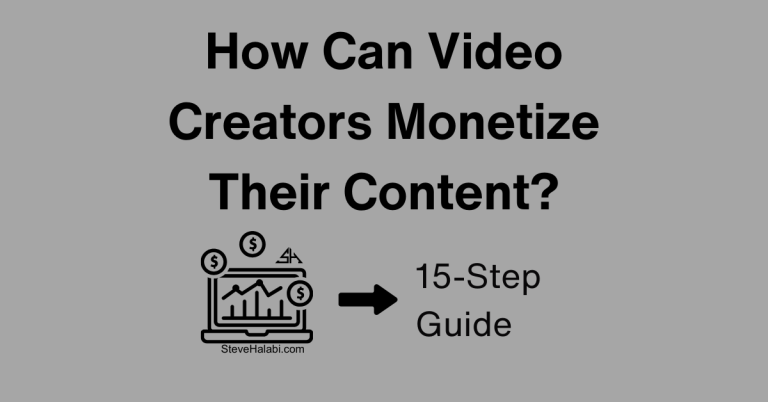Sell Digital Products On Your Blog
Introduction:
Selling digital products is one of the highest-margin monetization methods for bloggers, offering scalability, automation, and long-term revenue potential.
- Ebooks, courses, and templates create passive income once set up.
- Digital products can be priced higher than ad revenue & affiliate commissions.
- Automated sales funnels & email marketing help generate recurring sales.
Yet, many bloggers struggle with digital product sales due to:
- Not knowing which product type fits their audience.
- Underpricing or overpricing digital products.
- Lack of an optimized sales funnel & marketing strategy.
What You’ll Learn in This Guide
- How to choose the right digital product for your niche.
- The best AI tools to create & automate digital product sales.
- Pricing strategies & marketing tactics to maximize revenue.
- Real-world case studies of bloggers successfully selling digital products.
By the end, you’ll have a clear roadmap for creating and selling profitable digital products on your blog.
Ready to get started? Let’s dive in!
Disclosure: When you buy through a link on this site, I may earn a commission at no extra cost to you.
Step 1: Choosing the Right Digital Product
The best digital product depends on your niche and audience demand – choosing the right one ensures higher conversions and revenue.
Best Digital Products Based on Blog Niches
- Ebooks & Guides – Best for personal finance, blogging, and self-improvement niches.
- Printables & Templates – Ideal for DIY, productivity, business, and education bloggers.
- Online Courses & Workshops – Works well for marketing, fitness, wellness, and tech niches.
- Spreadsheets and Automation Tools – Ideal for finance, Saas, and workflow optimization niches.
How to Validate Digital Product Demand
- Utilize SEO and Keyword Research – Identify what people are searching for using tools like Ahrefs and SurferSEO.
- Analyze Competitor Sales – Check top-selling ebooks & courses on Gumroad, Udemy, and Amazon.
- Survey Your Email List & Blog Readers – Ask what problems they need solutions for.
Pro Tip: A profitable digital product solves a specific problem – identify pain points and create a solution around them.

“Use Ahrefs to validate product demand with keyword research and competitor insights. This ensures you pick a product that people are actively searching for!”
Get Started Here! Ahrefs
Step 2: Creating Digital Products
Once you’ve chosen the right digital product, creating it efficiently while maintaining high quality is crucial for conversions and customer satisfaction.
Best Tools for Creating Digital Products
- Ebooks & Guides – Use Canva (Free & Paid) for visually appealing designs.
- Printables & Templates – Create in Adobe Illustrator, Canva, or Google Docs for easy customization.
- Online Courses & Workshops – Host on Teachable or Podia for automation & student management.
- Spreadsheets & Automation Tools – Use Google Sheets, Excel, or Airtable for financial & business templates.
How to Create Digital Products Efficiently
- Use AI-Powered Writing & Design Tools – Example:
- Jasper AI & ChatGPT for writing course content.
- Canva AI for generating ebook & template designs.
- Follow a Proven Framework for Course & Ebook Creation – Outline content before creating modules or chapters.
- Repurpose Existing Content for Faster Creation – Convert blog posts, podcasts, and video content into ebooks & templates.
- Test Before Launching – Offer beta access or discounted pre-sales to collect feedback & optimize content.
Pro Tip: AI tools help streamline product creation by automating design and writing to speed up production.
“Canva makes it easy to design ebooks, templates, and printables that look professional. Jasper AI helps you write product content quickly without sacrificing quality!”
Get Started Here! Canva
Step 3: Pricing Digital Products
Pricing affects perceived value, sales volume, and overall revenue. Setting the right price ensures both conversions and profitability.
Pricing Models for Digital Products
- Low-Ticket Pricing ($5 – $50) – Best for printables, planners, and simple templates.
- Mid-Ticket Pricing ($50 – $200) – Works for ebooks, advanced templates, and niche courses.
- High-Ticket Pricing ($200 – $1,000) – Ideal for comprehensive courses, coaching programs, and premium toolkits.
How to Price Digital Products Effectively
- Compare Market Prices – Check similar products on Gumroad, Udemy, and Etsy.
- Use Tiered Pricing & Upsells – Example: Basic Guide ($29), Pro Package ($79), Ultimate Course Bundle ($199).
- Offer Limited-Time Discounts for Launch Sales – Create urgency by offering a pre-sale or early-bird pricing.
- Test Pricing with A/B Experiments – Use AI tools like Price Intelligently for data-driven pricing strategies.
Pro Tip: People perceive higher-priced digital products as more valuable, test premium pricing models!
“Use SamCart to set up flexible pricing options and upsells for your digital products. QuickBooks tracks your revenue and ensures your financials are organized!”
Get Started Here! SamCart
Step 4: Setting Up an Optimized Sales Funnel
A sales funnel converts casual visitors into paying customers – a well-structured funnel increases conversions & long-term revenue.
Best Sales Funnel Structure for Digital Products
- Free Lead Magnet to Capture Emails – Example: Get My Free SEO Checklist – Enter Email – Nurture Sequence Promotes Premium SEO Course.
- Landing Page with Compelling Offer & CTA – Optimized for conversions & social proof.
- Automated Email Sequences for Lead Nurturing – Warm leads with educational & promotional content.
- Upsell & Cross-Sell for Higher Revenue – Offer bundles, VIP coaching, or additional downloads.
- Retargeting Ads for Non-Converters – Facebook & Google Ads re-engage visitors who didn’t purchase.
Best Tools for Setting Up Automated Sales Funnels
- Kit (Paid & Free Plan) – Automates email sales funnels & lead magnets.
- ClickFunnels (Paid) – Optimized for one-click sales & upsells.
- Teachable (Paid) – Great for course creators who want built-in payment processing.
Pro Tip: A structured sales funnel increases revenue by guiding customers through an optimized purchase journey.
“LeadPages creates high-converting landing pages for your offers. Kit automates your email funnel and nurtures subscribers until they are ready to buy!”
Get Started Here! LeadPages
Step 5: Using Email Marketing to Increase Conversions
Email marketing is one of the highest-converting channels for selling digital products, helping bloggers build trust, nurture leads, and generate repeat sales.
Why Email Marketing Works for Digital Product Sales
- Direct Access to an Engaged Audience – Unlike social media, email subscribers are more likely to convert.
- Increases Digital Product Sales Through Automated Sequences – Email funnels sell courses, templates, and ebooks on autopilot.
- Encourages Repeat Customers & Upsells – Use segmentation to send personalized offers based on past purchases.
Best Email Marketing Strategies for Selling Digital Products
- Create a Lead Magnet to Capture Emails – Example: Get my Free Blog Monetization Checklist – Nurture leads with a sequence that promotes your premium ebook.
- Use a 5 – 7 Email Sales Funnel to Convert Leads – Example: Day 1: Freebie – Day 3: Introduce paid product – Day 5: Limited-time discount offer.
- Segment Subscribers Based on Interests – Promote specific digital products based on past email behaviour.
- Send Limited-Time Offers to Encourage Action – Example: Only 48 hours left to grab my Blogging Course at 30% off!
Best Tools for Email Automation & Digital Product Sales
- Kit (Paid & Free Plan) – Automates email sequences & sales funnels.
- MailerLite (Free & Paid) – Beginner-friendly automation for digital product sales.
- Substack (Free & Paid) – Perfect for selling paid newsletters & exclusive content.
Pro Tip: Automated email sequences can increase digital product sales by 30 – 50%. Set up funnels early!
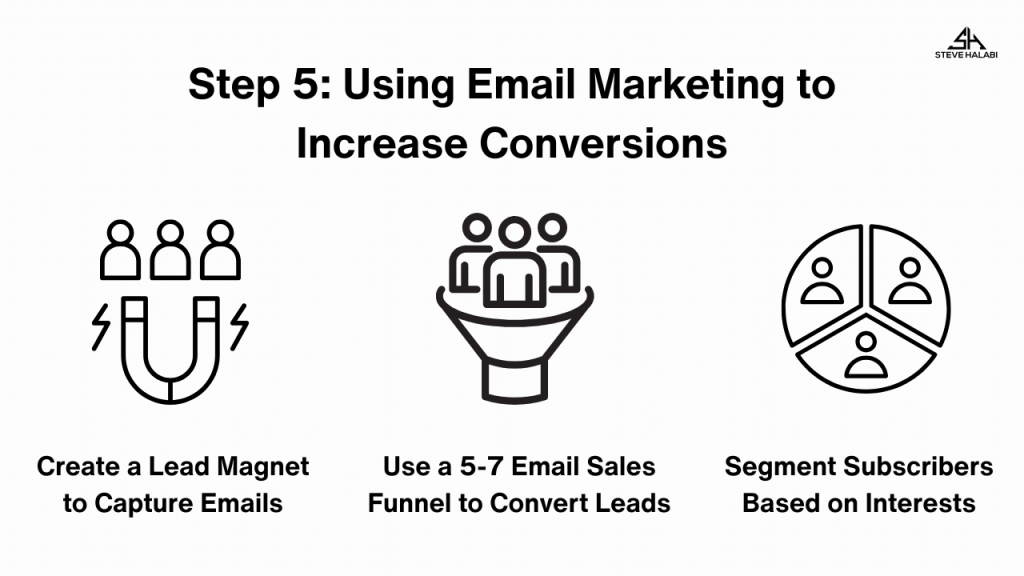
“Kit allows you to build automated sequences that sell your products on autopilot. SparkLoop adds referral programs to grow your email list faster and drive more sales!”
Get Started Here! Kit
Step 6: Selling Digital Products on Your Blog vs. Third-Party Platforms
Bloggers can sell digital products directly on their site or leverage third-party platforms, each has pros & cons.
Comparison: Selling Digital Products on Your Blog vs. Third-Party Platforms
|
Selling Method |
Pros |
Cons |
|---|---|---|
|
On Your Blog |
100% profit, full control, brand authority |
Requires website setup & payment gateway |
|
Gumroad |
Easy to set up, handles payments |
Transaction fees, less brand control |
|
Etsy |
Large built-in audience |
High competition, listing fees |
|
Teachable (for Courses) |
Built-in course tools, secure hosting |
Monthly fees, revenue split |
How to Decide Where to Sell Digital Products
- Sell Directly on Your Blog for Full Control – Best for bloggers building a long-term brand.
- Utilize Third-Party Platforms for Faster Setup and Built-In Traffic – Ideal for new creators testing demand.
- Combine Both for Maximum Reach & Sales – Example: Sell courses on Teachable & offer exclusive ebooks directly on your blog.
Best Platforms for Selling Digital Products
- ThriveCart (One-Time Fee) – Optimized checkout system for selling digital downloads.
- Podia (Paid) – Great for selling memberships & online courses.
- Etsy & Gumroad (Free & Paid) – Best for selling printables & templates.
Pro Tip: Selling digital products directly on your blog can lead to higher profits – consider using third-party platforms to expand your reach.
“SamCart gives you full control with a checkout system built for selling digital products. WooCommerce is perfect for bloggers on WordPress who want to integrate an online store!”
Get Started Here! SamCart
Step 7: Scaling Digital Product Sales
Once digital product sales are running smoothly, scaling with paid advertising & affiliate partnerships increases earnings exponentially.
How to Scale Digital Product Sales Efficiently
- Utilize Paid Ads to Target High-Intent Buyers – Example: Facebook and Instagram Ads for Impulse Digital Product Sales. Google Search Ads for people actively searching for solutions
- Offer an Affiliate Program to Boost Sales – Allow other bloggers to promote your ebooks & courses.
- Use Retargeting Ads for Visitors Who Didn’t Convert – Follow up with visitors who abandoned checkout.
- Bundle Products & Offer Upsells for Higher Sales Value – Example: Upgrade your Ebook purchase to the Ultimate Toolkit for just $29 more!
Best Tools for Scaling Digital Product Sales
- Facebook & Google Ads (Paid) – Target ideal customers and increase sales conversions.
- ThriveCart (Paid) – Built-in affiliate program management for digital products.
- ClickFunnels (Paid) – Optimized sales funnels & upsell sequences.
Pro Tip: Paid ads scale digital product sales faster – test multiple ad creatives & retargeting strategies.
“AdEspresso helps you test and scale Facebook and Google Ads to reach more buyers. PartnerStack lets you create an affiliate program so others can promote your products for you!”
Get Started Here! AdEspresso – PartnerStack
Step 8: Real-World Case Studies
Seeing real-world success stories helps bloggers understand how to effectively structure, market, and scale digital product sales.
Case Study 1: How a Finance Blogger Scaled to $10K/Month Selling Digital Templates
The Challenge:
- A finance blogger wanted to move beyond affiliate marketing and ad revenue to increase earnings.
The Monetization Strategy:
- Created & sold budgeting spreadsheets and financial planning templates.
- Used Pinterest & SEO to drive targeted traffic to product pages.
- Implemented an email funnel offering a free budget planner, leading to a paid upsell.
The Results:
- $10,000+/month in passive income from templates.
- 60% of buyers converted through email marketing.
- Recurring sales with limited ad spend.
Key Takeaway: SEO traffic + email marketing is a winning strategy for selling digital products.
Want to automate your digital product sales? Kit here for seamless email sequences & upsells!
Case Study 2: How a DIY Blogger Built a Six-Figure Business Selling Printables & Ebooks
The Challenge:
A craft blogger struggled with inconsistent ad revenue and wanted a more stable income stream.
The Monetization Strategy:
- Created seasonal printables (Christmas planners, craft templates, and home organization guides).
- Sold digital planners on Etsy while also offering them on the blog.
- Used an email list to offer exclusive discounts & VIP bundles.
The Results:
- $120,000+/year from printable sales & digital guides.
- More than 50% of sales came from Pinterest traffic.
- Bundling products increased order value by 40%.
Key Takeaway: Combining seasonal content with Pinterest traffic is an effective way to boost digital product sales.
Want to start selling printables & templates? Try Gumroad here for easy digital product hosting!
Case Study 3: How a Business Coach Monetized with a High-Ticket Course & Membership
The Challenge:
- A business coach wanted to move beyond one-on-one services and generate passive income.
The Monetization Strategy:
- Created a premium course teaching entrepreneurs how to scale their business.
- Launched a membership for ongoing coaching & exclusive workshops.
- Used a webinar funnel to convert high-ticket sales.
The Results:
- $250,000+ in annual revenue from courses & memberships.
- Webinar funnels generated consistent high-ticket enrollments.
- Lifetime value (LTV) of each student increased with the membership add-on.
Key Takeaway: Combining webinars with high-ticket products creates a powerful combination for digital sales.
Want to create a high-converting course? Try Teachable here for an all-in-one course platform!
“Use Affluent to monitor affiliate earnings alongside your product sales. This shows how digital products and affiliate marketing can work together to grow income streams!”
Get Started Here! Affluent
Step 9: Common Mistakes Bloggers Make
Even with great products and a structured funnel, some bloggers make costly mistakes that hurt sales.
Biggest Digital Product Sales Mistakes & How to Fix Them
|
Sales Mistakes |
How to Fix Them |
|---|---|
|
Not Validating Demand Before Creating a Product |
Test product ideas with surveys or pre-orders before launching. |
|
Underpricing Digital Products, Thinking Lower Prices = More Sales |
Premium pricing creates perceived value. |
|
Not Driving Enough Traffic to Product Pages |
Use SEO, email marketing, and paid ads to get more visibility. |
|
Selling on the Wrong Platform |
Sell on your blog if you want full control; use Etsy or Gumroad for faster exposure. |
|
Forgetting to A/B Test Landing Pages & Sales Funnels |
Optimize copy, CTAs, and design for higher conversions. |
Best Tools to Avoid Digital Product Sales Mistakes
- Google Optimize (Free & Paid) – A/B tests different sales page versions.
- Hotjar (Free & Paid) – Analyzes user behavior & CTA interactions.
- Affluent (Free & Paid) – Tracks digital product revenue across multiple platforms.
Pro Tip: Selling digital products isn’t just about creation – marketing, pricing, and sales funnel optimization are key to success.
“MonsterInsights tracks which digital product pages convert best so you can improve your offers. SurferSEO ensures your sales pages are optimized to rank and attract consistent traffic!”
Get Started Here! MonsterInsights – SurferSEO
Step 10: Finalizing Your Digital Product Strategy
A successful digital product strategy requires more than just launching a product – it involves tracking performance, optimizing marketing, and scaling over time.
How to Sustain & Scale Digital Product Revenue
- Set a Long-Term Traffic Strategy – Use SEO, Pinterest, and email marketing to generate steady visitors.
- Continuously Improve Sales Pages & Pricing Models – Optimize copy, CTAs, and A/B test pricing structures.
- Automate Email Funnels for Consistent Sales – Nurture new subscribers and send upsells to past buyers.
- Expand to New Digital Product Categories – Example: If you sell ebooks, add templates, checklists, or a paid membership.
- Track Revenue & Customer Insights for Future Growth – Use Affluent & Google Analytics to refine your monetization strategy.
Pro Tip: Scaling digital product sales is about systemizing marketing & sales funnels – automation ensures long-term growth.
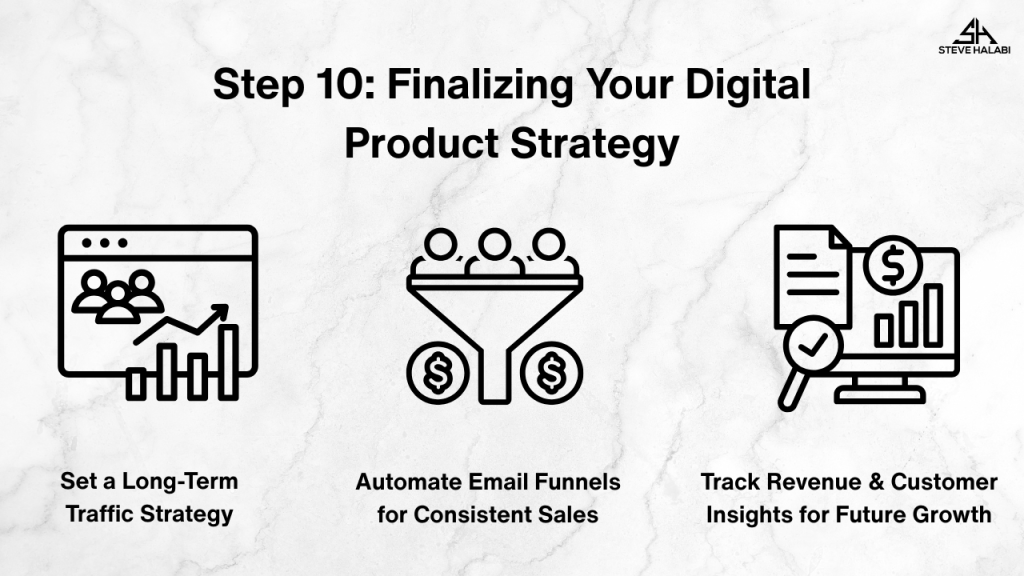
“Zapier connects your apps so that revenue tracking, customer management, and reporting all run automatically. WPX hosting keeps your blog fast and reliable, which is critical for online sales!”
Get Started Here! Zapier – WPX
Conclusion
Selling digital products is one of the most profitable and scalable monetization strategies for bloggers.
Key Takeaways:
- Choose digital products that align with your niche & audience demand.
- Utilize AI tools to expedite product creation and automate marketing.
- Optimize pricing, sales pages, and funnels to maximize conversions.
- Diversify revenue by expanding to new digital product types over time.
Start creating & selling your first digital product today!
Try Teachable here to launch & sell profitable digital products effortlessly!
Ebook: Product Stacking for Predictable Income

Build a Digital Product Path That Supports Every Stage of Your Audience’s Journey
Selling one product is a start, but stacking your offers is what creates stability. This eBook shows you how to plan and organize your digital products so each one supports the next, giving your audience a clear path forward and giving you more consistent income.
Here’s what you’ll learn inside:
- What product stacking is and how it works for bloggers and creators
- How to map out a simple, natural product journey for your audience
- Why stacking leads to better sales, higher lifetime value, and less pressure
- Real examples of product paths that align with content and audience goals
This eBook is for you if:
- You’re ready to create a smarter path that supports your business long-term
- You’ve launched a product but aren’t sure what comes next
- You want to sell more without always launching something new



